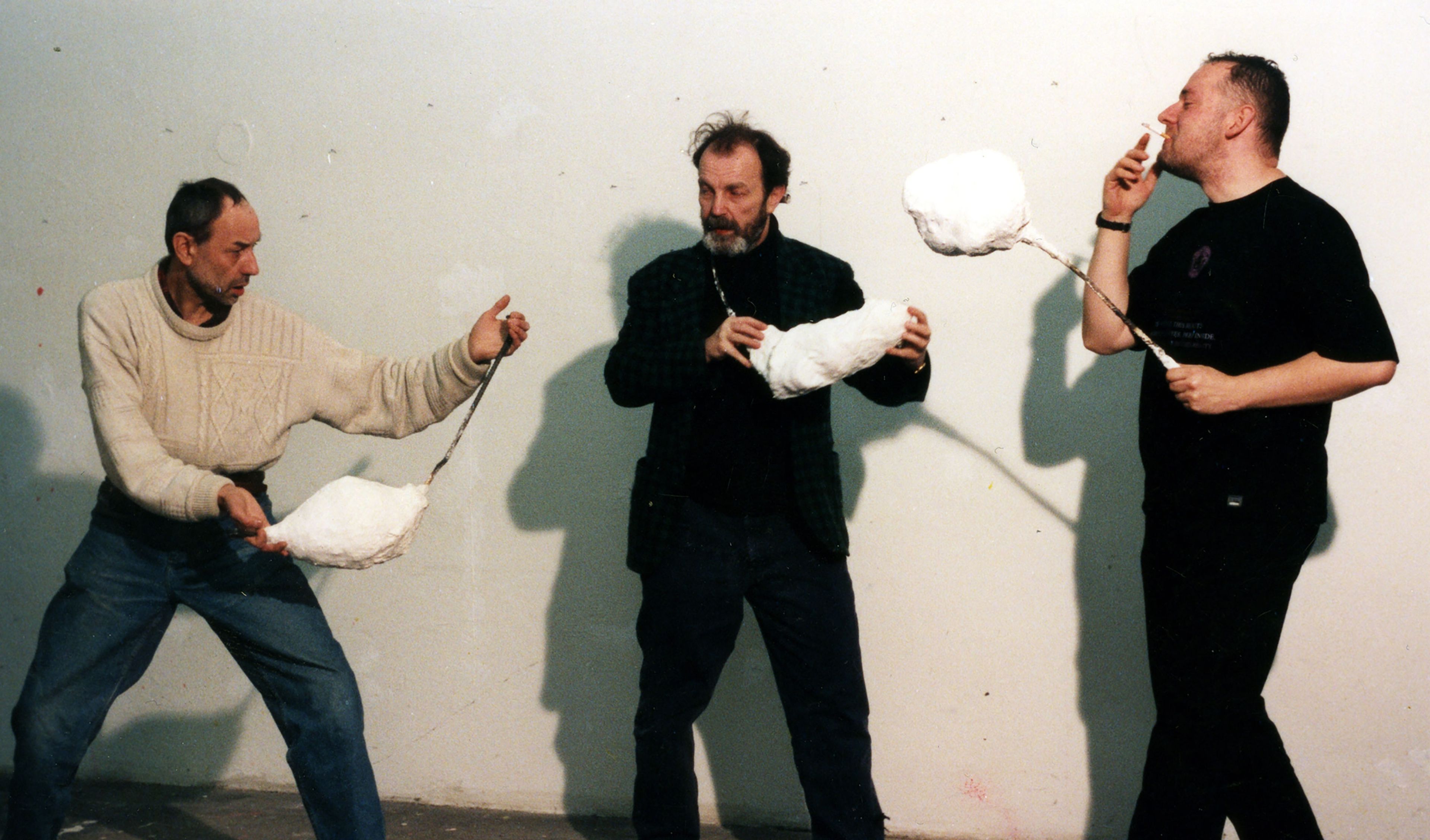2018
This Is Not a Prop at david Zwirner in New York brought together a multigenerational group of artists whose work explores the liminal space between body and object. The exhibition takes as its point of departure Franz West’s (1947–2012) furniture and Passstücke (Adaptives). Intended to be interacted with, West’s works redefine art as a social experience and ask how objects can function both as physical extensions of the body and as representations of the human experience. We asked three of the artists featured in the show—Alex Da Corte, Hannah Levy, and Oren Pinhassi—to share their thoughts on the ways in which West’s work and legacy directly engages with or diverges from conversations about art making today.
How were you first introduced to Franz West’s work?
I remember first seeing Franz West’s work when I visited Mary Heilmann’s studio in East Hampton in the early 2000s. She had several of his chairs and many chairs of her own. In my mind, there were at least thirty chairs in a very small room, all different colors and fabrics. I remember thinking it was beautifully absurd to have so many chairs in a small house and that one day I would like to have that many chairs too.
—Alex Da Corte
I think I first learned about West when a friend suggested I look at his work my sophomore year in college. I checked his Phaidon monograph out from the library and kept renewing it for the following two semesters. The first time I remember seeing his work in person was a few months later on the roof of the ICA in London. I still have a poster.
—Hannah Levy
West proposed a new mode of playful interaction that took the viewer very seriously. What role does performance—as a concept and as a category of postwar art—have in your own practice?
I recall the Comic Abstraction show at MoMA and falling in love with his work. It was at this same time that I had met Oliver Herring and fell in love with his performances as well. They both had this irreverent joy and play in their work, which was both performance and painting and sculpture. I think this blurry line is what attracted me. To make a chair that is also a performance that is also a meal and poem is a beautiful endeavor. Totally free. I strive for my work to be all of those things: painting, dance, and sometimes dinner.
—Alex Da Corte
I think there is some space for performance, or interaction, in most of my sculptures. Although the viewer is generally not encouraged to touch the work, there’s an implication of interaction. There is a proposal/potential for performance that is often left unfulfilled. I’ve also made works that are meant to be worn or performed in: latex and silicone costumes that act as a kind of floppy straitjacket. There is some tension in that the performer is constricted in a certain way—their body is under a tremendous amount of weight and pressure—but the resulting gestures are comedic in how floppy bodily actions appear when magnified by these materials.
—Hannah Levy
In what ways is West’s art relevant to your own?
His work is an influence on so many artists of my generation. He died while I was in school, which I think meant that a lot of us were reintroduced to his work during a time when our ideas surrounding art were really forming.
—Hannah Levy
I think there’s a direct relationship between the political and social atmosphere around the world right now and the return to figuration. I believe and hope that this has to do with an attempt to think in humanist terms again. Figuration can serve as a point of entry for humans to understand and empathize with abstract or invisible forces and functions, perhaps allowing the viewer/user to also get closer to the logic of how something was produced—under what kind of economy and by the means of what type of labor.
It seems to me that West’s work was dealing with that tension of figuration and the relationship between humans and objects throughout his career and in very diverse ways. I love the use of color in his more monumental pieces. Those works are abstract in a sense, but at the same time they couldn’t possibly be any more bodily or raw. It’s amazing to be able to create work on that scale, connecting to inherently macho, brutalist or minimalist traditions, while at the same time maintaining such fragility and humanity. In my practice, I am often trying to achieve similar complexities where categories blur. This merger or blurring of borders—a fluid space where a chair is also a figure, a towel is also a snake, vegetation becomes architecture—is a political and an erotic logic, because it encourages the simultaneous existence of seemingly separate categories.
It seems crucial to me to deal with these subjects now: to refuse the submissive nature of algorithm-ruled life and the extreme abstraction of the production chains responsible for everything we consume. This numbness is emptying our ability to reimagine better ways of living and relating to each other, relating to the rawness and otherness of bodies, and to our place in a more complex network of forces connecting objects and living beings. To me, those subjects are plainly visible in West’s work, and in that sense I think they are incredibly relevant today.
Alex Da Corte’s (b. 1980) work explores the formal potential of everyday artifacts of consumer culture and questions how these commodities can possess meaning beyond their original function.
Like West’s furniture, Hannah Levy’s (b. 1991) anthropomorphic works explore the intersection of sculpture and design.
Oren Pinhassi’s (b. 1985) work imagines the erotic potential of architecture and constructed spaces.
Image: Franz West (center) and friends interacting with West's Passstücke (Adaptives), 1998 © 2018 Archiv Franz West

